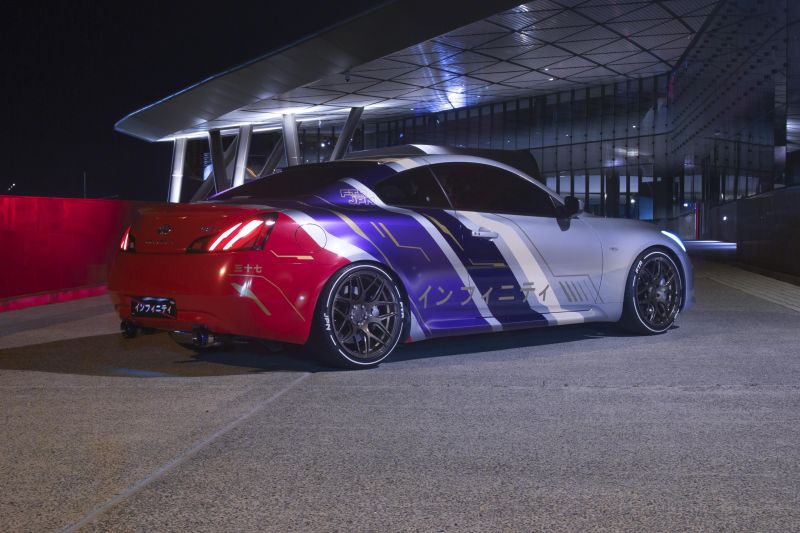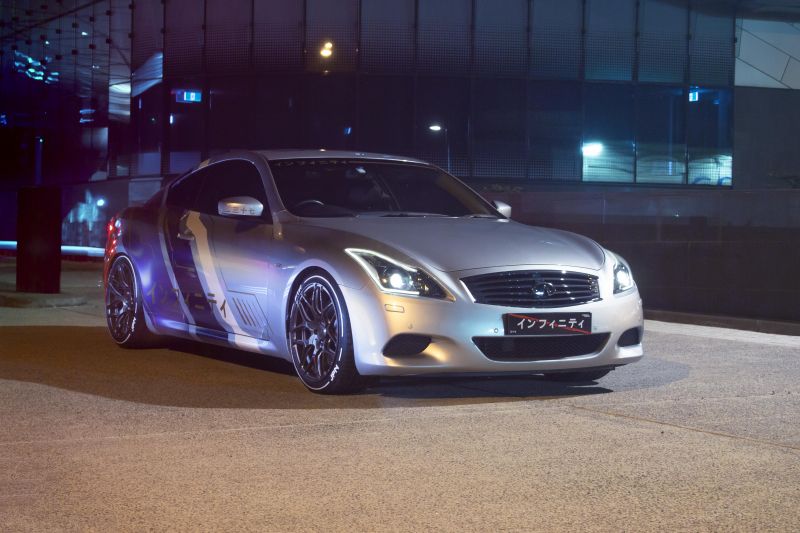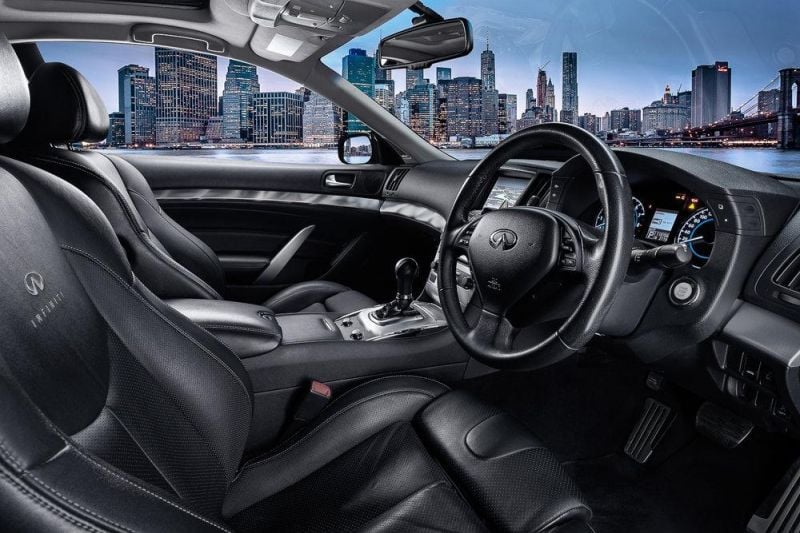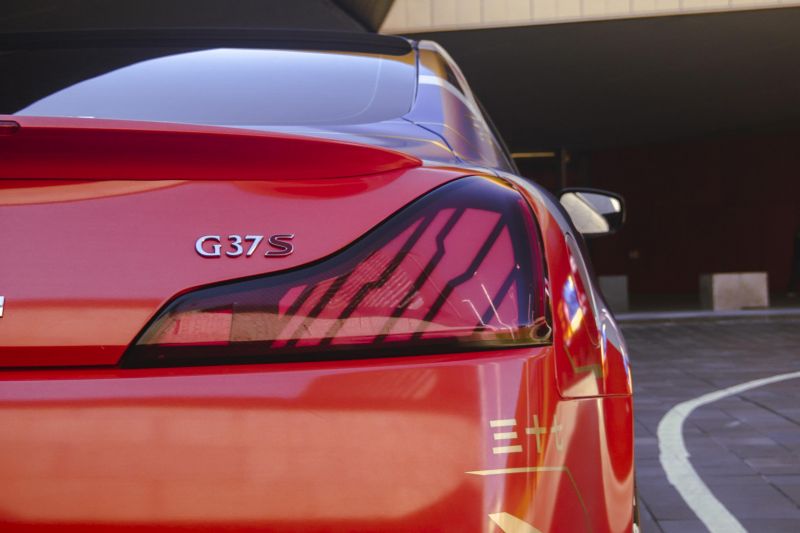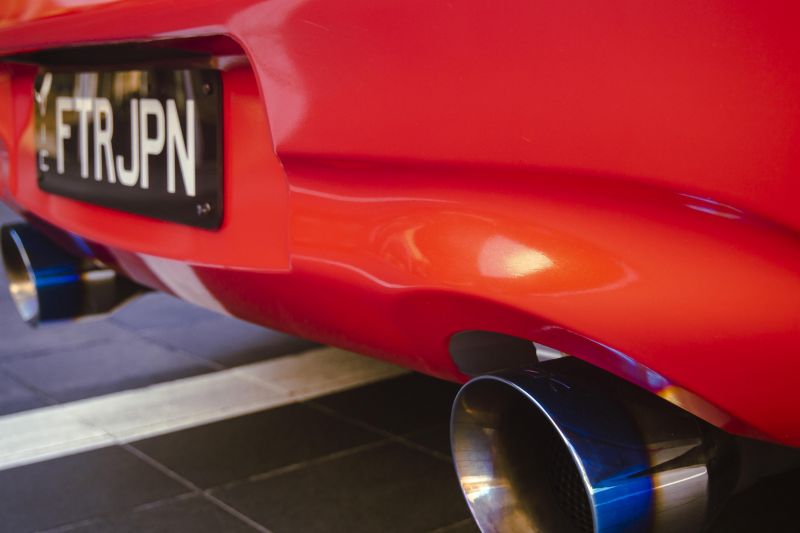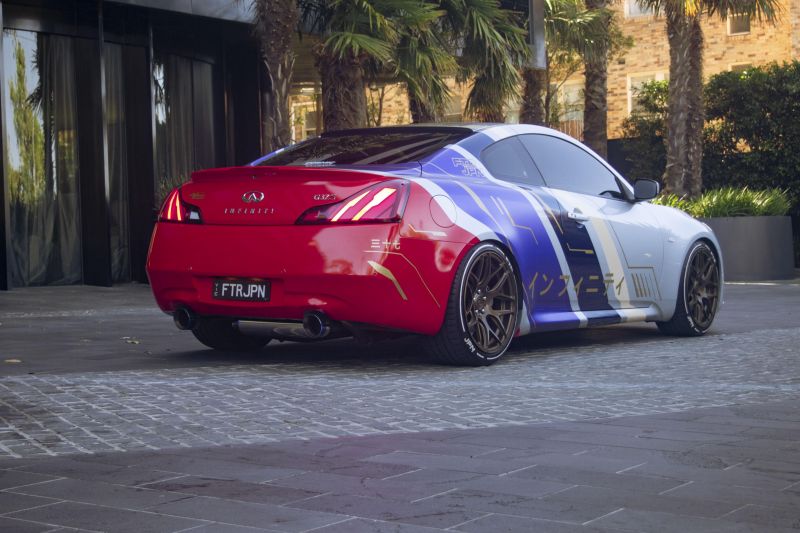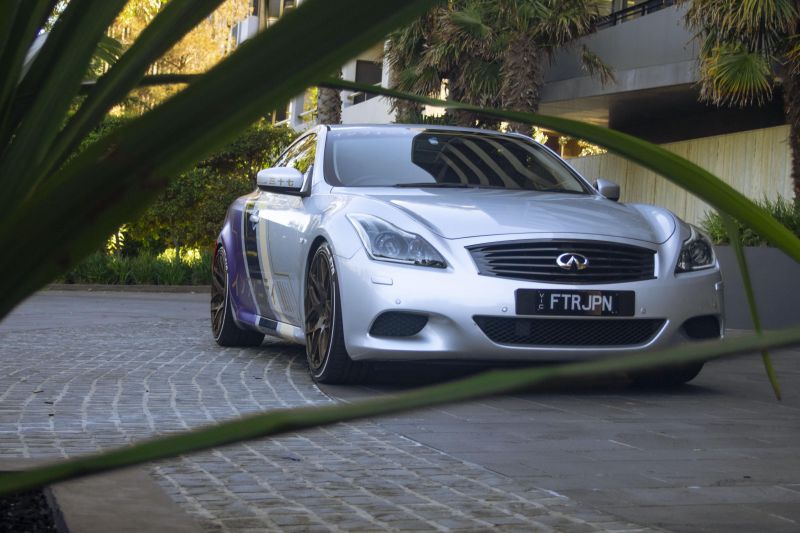About the Infiniti G37
Lachlan H purchased this Infiniti G37 used for $39,000 (including all on-road costs) in 2015. Lachlan H would buy this car again because: “The G37 S is not without its flaws, but it has been reliable, characterful, versatile and thoroughly enjoyable. It has personality, presence, and still holds a sense of occasion to drive, even after all this time – and, for the most part, not at the expense of practicality and liveability.
On its merits, it’s worth the money I paid. The biggest obstacle to buying it again is how far motoring has moved on since 2013. We’re on the cusp of an EV revolution, and the G37 S sticks to a decidedly traditional automotive recipe; so for any prospective buyers, it’s up to you to decide whether that’s a plus or a minus.”
How reliable has your car been? Tell us about any issues.
Despite seriously tempting the wrath of the reliability gods with a slew of modifications, the car has proven to be stubbornly dependable. The G37 S was bestowed with the last hurrah of Nissan’s VQ-series of engines, described to be “as reliable as a hammer” overseas, and in my experience it has stayed true to its bombproof reputation.
By opting for an Australian-delivered Infiniti model (which was sold here from 2013 onwards) instead of its cheaper Japanese-market V36 Skyline twin, I’ve avoided oil gallery gasket issues that cropped up in the 2008-2010 models.
There are a few items to keep an eye on – the car regularly wears brake rotors due to a hard OEM brake pad compound, the front end will develop toe-out and exhibit uneven tyre tread wear if the wheel alignment isn’t done regularly, and the front left sway bar end link is known to snap after a while.
The one biggie was the OEM catalytic converters. The internals detached, which is a known issue and is bloody expensive to fix. I solved that by going aftermarket, but that has a noise penalty that some may not be comfortable with.
Having said all that, I’ve put over 110,000km on the car in six years, and most people won’t do that many kilometres. The fundamentals of the car are rock-solid and it has not once failed me in any of the driving I’ve done with it.
What do you think of the ownership experience with your car?
Before we get into the ownership experience, some context: this review is a follow-up to an earlier one posted on the site formerly known as CarAdvice, and that review is still available if you’d like to read about living with a mostly-stock Infiniti G37.
Since that first review was written, the car has gone from mostly stock to heavily modified, and this review is about that journey.
There are no two ways about it: by modifying a car – even the sensible, considered, “do-it-once-and-do-it-properly” way, as I tried – you’re making life difficult for yourself. The whole process is an exercise in Hofstadter’s Law: it always takes longer than you think, even when you plan for it to take longer than you think.
Parts will inexplicably turn out to have the wrong joint type/shape/fitment, especially when Nissan has made little changes between model years. Components will get stuck in ports overseas (hello, COVID shipping delays). And in the case of modern cars – the plethora of ECU modules, sensors, and computers governing everything from ignition timing to cruise control to parking sensors will crack the sads when you change something.
You will need to give them a virtual hug, say that everything is okay, and give them what they want. Some of this you can anticipate, and some of it – especially the computer gremlins – you can’t.
Yet, overall, my G37 S has been unflappable throughout. I had a vision for what I wanted the car to be before a screw was turned, and having heard so many horror stories from friends and acquaintances about what happens when you’re a) impulsive, b) impatient, and c) pushing the envelope with car modification, I resolved to work with the car’s strengths, not try to turn it into something it was never designed to be, and to plan meticulously at every step, making life as easy as possible for the many professionals and suppliers I engaged during the modification process to do their best work.
The result is a car that’s louder (visually and aurally), lower, grippier, faster and more engaging than it was before, yet with no excuses on why certain things don’t work, no features I’ve had to lose, and functions as a testament to the idea that you can, mostly, have your cake and eat it if you’re willing to be careful and thorough along the way.
It has been frustrating dealing with delays and speed humps along the way, but none of those were the car’s fault, and none of them were as a result of shoddy workmanship or dodgy decision-making. When it came down to it, the G37 was always ready to rumble virtually without caveat, and that’s a rarity amongst modified cars.
Are you happy with the price and features of your car?
For what I paid originally? Absolutely, it was a steal. Paraphrased from my original review, on the inside you get: remote keyless entry, cruise control, dual-zone climate control, moon roof, 11-speaker BOSE audio system with 10GB integrated hard drive and Bluetooth connectivity, native (though admittedly a bit outdated and dim-witted now) sat-nav housed in a 7.0-inch colour touchscreen, full leather upholstery throughout the interior, with heated, power adjustable seats (14-way for the driver, 8-way for the passenger) with extendable thigh bolsters, tilt- and reach-adjustable steering column and instrument panel, and three memory settings to save the cockpit just the way you like it, including wing mirrors.
Outside and underneath, you’re looking at integrated front and rear foglights, adaptive bi-xenon headlights, 19-inch Enkei alloys, a subtle lip spoiler, viscous LSD, sports suspension, big Akebono brakes (four-pot front, two-pot rear calipers on ventilated discs), and four-wheel steering, propelled by that VQ37VHR engine pushing 235kW and 360Nm through a paddle-shift seven-speed automatic for a 0–100km/h figure in the high fives.
For what I paid doing all the modifications, which worked out to be fully 50 percent of the purchase price? I think so. The VQ37VHR engine isn’t easy to get big power out of without big money, so I focused on a more holistic approach. I’m a multimedia designer during the day, so I decided to put those skills to good use, treat the car as a complete creative project and go full cyberpunk on it.
I wanted to give it a futuristic look while avoiding the derivative approach that characterises a lot of cyberpunk design, and to honour the car’s Japanese origins as respectfully as possible.
Of course, with a look as wild as this, I’d need enough performance to back it up – but I still wanted to drive the car every day. So here it is, from a bone-stock Infiniti G37 S, the engine and drivetrain modifications are: a cat-back exhaust, high-flow catalytic converters, an ECU tune, short-ram intakes, catch cans, and a transmission cooler.
Handling wise, coilover suspension with aftermarket front camber arms and rear traction rods are the main items of note, along with upgraded front sway bar end links, and wider tyres on also wider 19″ Koya wheels.
Cosmetically, there’s the wrap covering the rear two thirds of the car, window tint, painted grille, roof lip spoiler, custom tyre decals, and modified OEM headlights and custom taillights with an LED conversion all around. I designed some fun mock Japanese registration plates, for maximum cyberpunk vibes when it’s time for a photoshoot, as the icing on the cake.
What do you think of the performance and economy of your car?
Performance strikes a lovely balance. From the stock 235kW/360Nm at the engine, it’s now sporting a final power figure of 221kW/350Nm at the wheels, which equates to about 265kW and 400Nm at the crank, with a huge 100Nm bump in midrange torque over stock.
Nothing too crazy, but enough to boogie, with a 0-100km/h figure in the low fives. It’ll embarrass your mate’s VF SS unless said mate really knows what they’re doing, and make a fantastically throaty howl while doing it.
I prefer more grip than go, and the G37 delivers on that. It’s got enough pace that you have a blast punching out of corners, and making good use of freeway on-ramps, but not so much that you’re doing licence-losing speeds very shortly afterwards.
It’s also only boisterous on cold start and when you decide to really poke the loud pedal, and honestly is about as loud as a modern M car or Jag F-Type in that regard. Idling, driving around, it’s all quite civilised, but when you have a point to make, the car will certainly make it. Perfect.
Economy, well… let’s be honest. It’s a big naturally-aspirated six, and it’s tuned for power over practicality. The short answer is, not great. It already liked a drink when standard, and it likes more of one now, though not as much as you might expect given the performance gains.
You’re looking at 8-9.5L/100km on the highway, with a wince-inducing 14-16L/100km in urban driving. Usually settles around 12-13L/100km on balance.
What do you think of the technology in your car?
Given the age of the car, the technology included is commendable. See the features section for the full rundown. As an Australia-delivered car, it does miss out on a few things that its Japanese and Euro-market equivalents have, like voice control, wing mirror cameras and support for traffic announcements, but compared to its peers here in 2013 the G37S wasn’t short of tech.
By modern standards, the infotainment interface is outdated, slow, and a bit clunky to use, but it’s functional. The sat-nav in particular shows its age, with the maligned suburb-then-street-then-number method of address input (which is especially irritating when suburb borders have changed), maps dating from five years ago and some questionable route choices, but it gets the job done.
Bluetooth connectivity is very quick and reliable for phone calls, though it’s fiddlier for playing music, and the streaming and call audio quality is nothing to write home about. Considering how fast Bluetooth standards change though, I’m surprised it still works as well as it does. We’ll rate this a six for “acceptable”.
What do you think of the ride comfort and handling of your car?
With the coilovers in, I’ve definitely shoved the ride/handling balance right over to the “handling” side, but some research and planning paid off and it’s just polite enough to live with every day, with my partner and even Mum confirming that it’s not too stiff to ride in. Test passed!
Stock, the car had excellent body control up to eight-tenths without compromising much on ride quality, which was firm, but not uncomfortably so – just communicating the road surface without being crashy about it. Above eight-tenths, a stock G37 gives you plenty of notice that you’re getting close to the limit, when things started to float and wallow. It wasn’t a track weapon, but it was forgiving to drive fast and that’s one of the things I really liked about it.
Now, it’s much stiffer and will bounce around a bit through bumpier corners, but the steering still tracks dead-straight, there’s no waiting for the body to settle, it sticks even better than before, upping cornering speeds from impressive to slightly ridiculous, and there’s no more tugging at the wheel over ruts and potholes than there was standard, which is the mark of excellent suspension geometry.
What’s new is that I do hit my head on the roof over bigger bumps occasionally, but hey… you win some, you lose some. I’ve definitely gained in the handling department, and I’m happy with the trade-off I made and went out of my way to ensure it still remained suitable for daily duties, but the ride is properly stiff compared to what many people would be used to from a standard car.
Do you have any additional comments about your car?
If you see me around, don’t be afraid to say hi!
